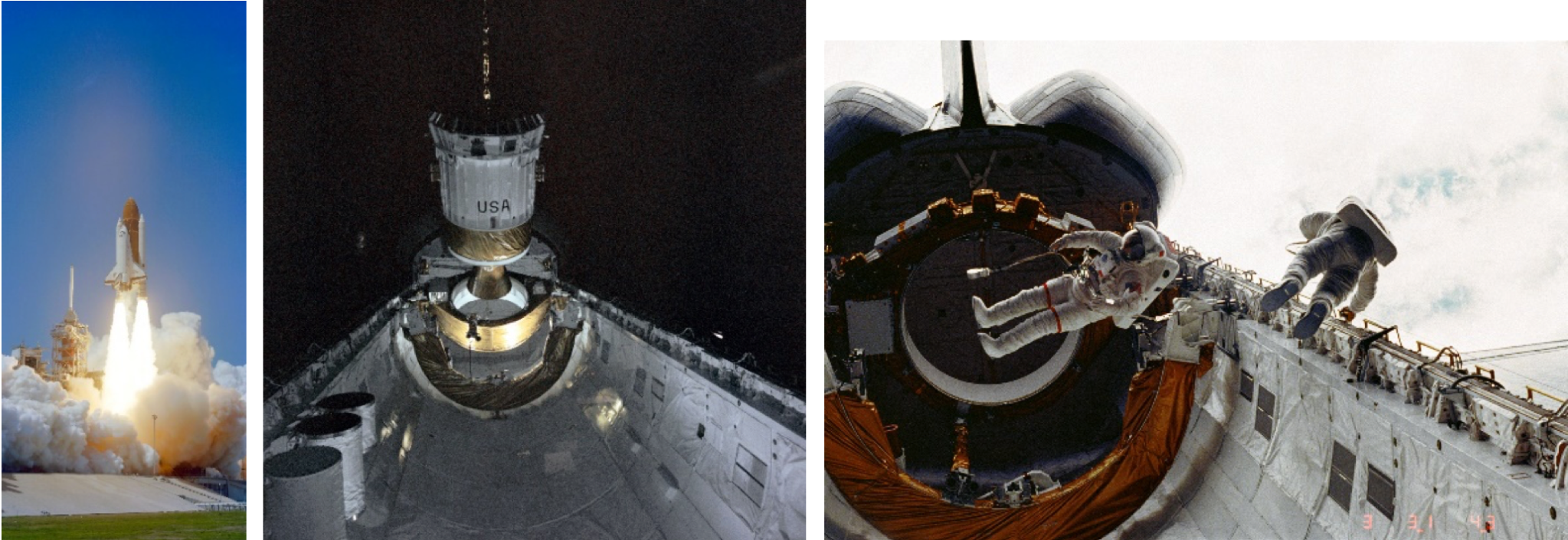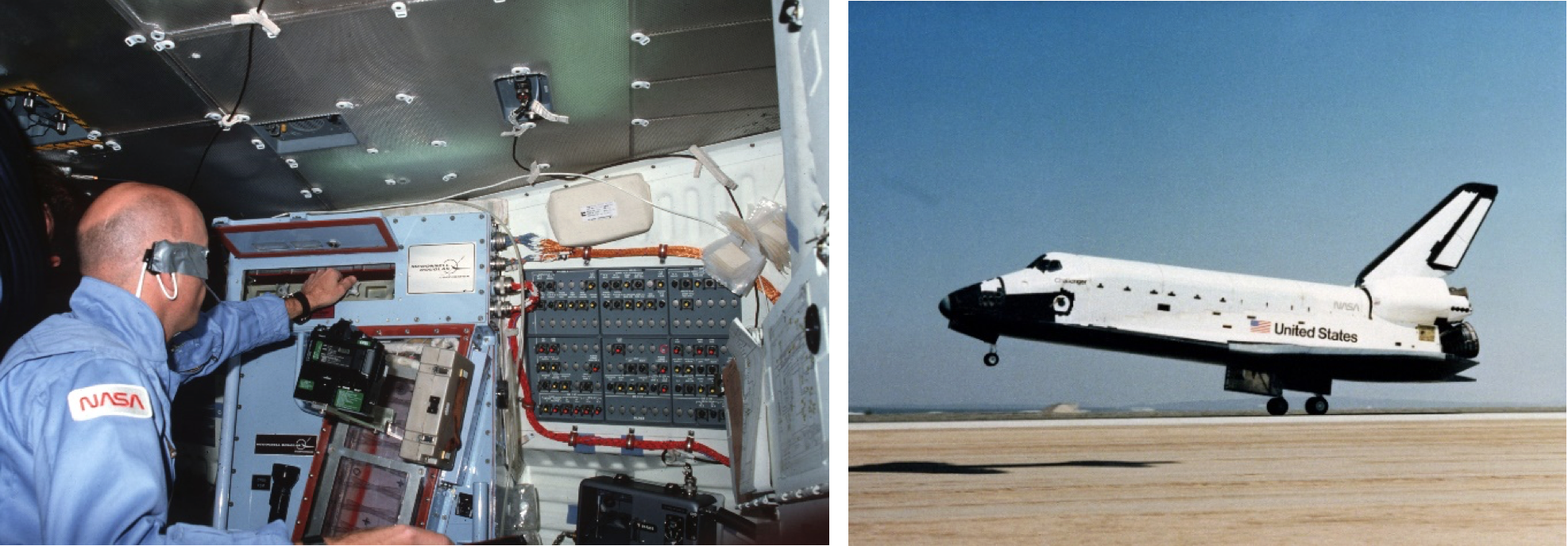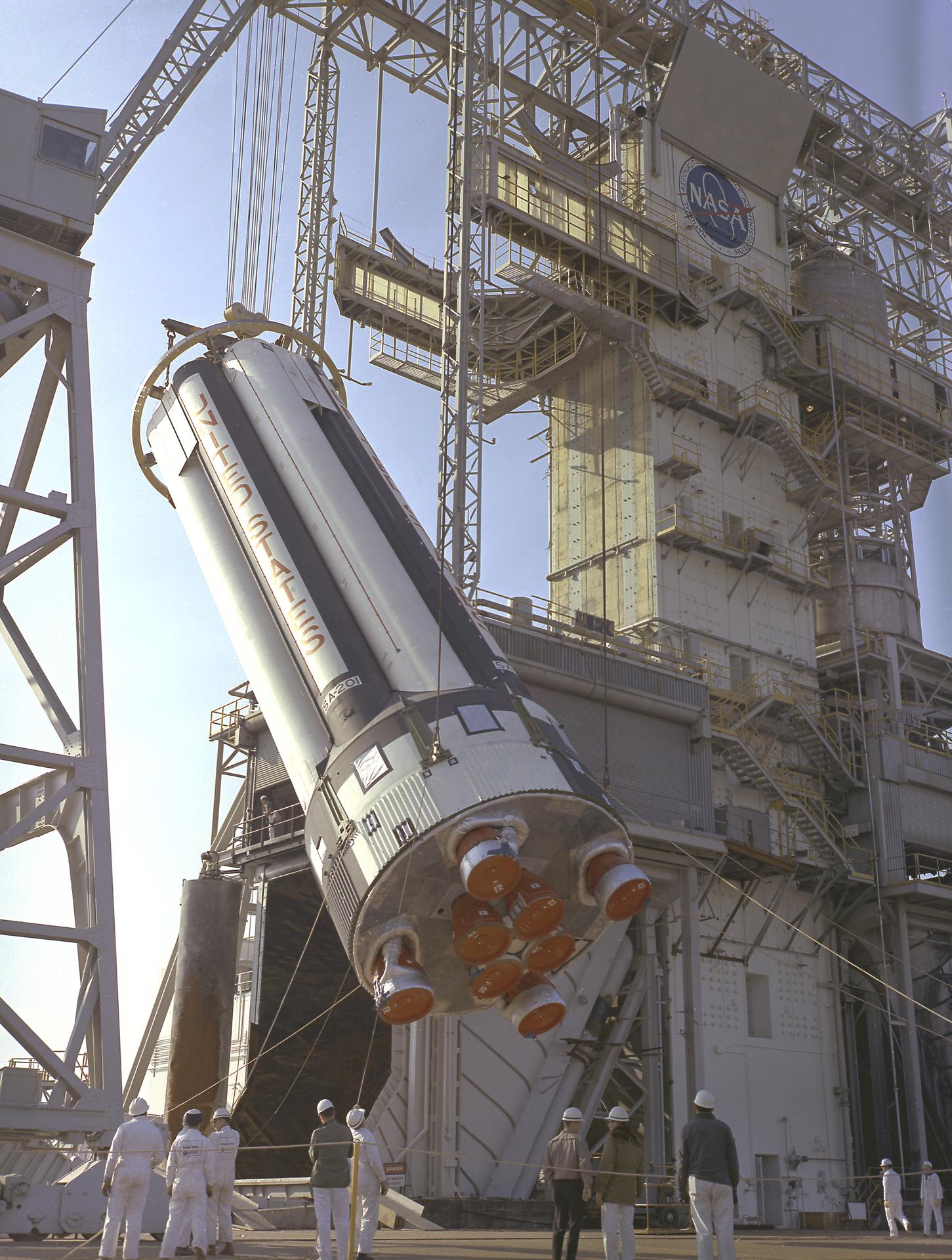This is a test
In early 1983, with five flights of the Space Shuttle Columbia successfully completed, NASA prepared to fly its second Orbiter, Space Shuttle Challenger, on its maiden voyage. Based on lessons learned, Challenger used a lighter airframe and employed lighter blankets instead of tiles for thermal protection in certain areas of the vehicle, saving 2,486 pounds in overall weight. For additional launch performance, Challenger’s main engines were rated to 104% maximum thrust versus Columbia’s 100%. The maiden flight of Challenger also marked the first use of a lightweight External Tank (ET), weighing about 10,000 pounds less than the tank flown on the first Shuttle flight, and the use of lighter Solid Rocket Booster (SRB) motor casings. All these improvements resulted in an increased payload mass capability.
The primary objective of Challenger’s first mission, STS 6, was to deploy the first in a series of Tracking and Data Relay Satellites (TDRS). The TDRS System, once fully deployed, was a constellation of high-capacity communications satellites in geostationary orbits to provide comprehensive voice and data transmissions between Space Shuttles (and eventually the International Space Station) and Mission Control. Before the TDRS System became operational, communications between the ground and the Shuttle were possible for only about 15 percent of each orbit. The Shuttle would deploy the TDRS satellite mated to an Inertial Upper Stage (IUS), which would boost it from low Earth orbit to geostationary orbit. Another major objective of STS 6 was to conduct the first Extra-Vehicular Activity (EVA) or space walk from the Space Shuttle, and indeed the first US EVA since Skylab in 1974. A variety of science experiments rounded out the five-day mission.
The crew of STS-6 had the distinction of being the oldest crew flown up to that time, with a combined age of 191 years and an average age of nearly 48. Three of the crewmembers had waited fifteen years or more for their first space flight since being selected as astronauts. Commander of STS-6 was Paul J. Weitz, selected in 1966 and a veteran of the 28-day Skylab 2 mission in 1973. Pilot Karol J. Bobko, making his first space flight, was selected in the second group of astronauts for the US Air Force Manned Orbiting Lab (MOL) in 1966 and transferred to NASA in 1969. The two Mission Specialists were F. Story Musgrave, a scientist-astronaut selected in 1967, and Donald H. Peterson, another MOL astronaut transferred to NASA in 1969, both making their first flights.
Challenger arrived at Kennedy Space Center (KSC) on July 5, 1982, and after checkout and mating with its ET and SRBs rolled out to Launch Complex 39A on November 30. Launch of STS-6 occurred April 4, 1983, and about 10 hours into the mission, the crew deployed the TDRS/IUS stack from the cargo bay, successfully completing the primary objective of the flight. Unfortunately, the IUS placed the TDRS into an improperly low orbit, and it took several months of the TDRS using its own fuel to achieve the proper geostationary position. For the next two days, the crew conducted a variety of science experiments and prepared for the EVA on the fourth day. On April 7, wearing the new space suits designed specifically for Space Shuttle EVAs, Musgrave and Peterson floated out of the airlock and into Challenger’s cargo bay. For four hours and 10 minutes, the pair evaluated the mobility of the new suit and practiced various activities in the payload bay before returning to the airlock to end the first Shuttle EVA. On April 9, the crew fired Challenger’s engines to return to Earth, and made a successful landing at Edwards Air Force Base in California, having completed 80 orbits around the Earth in five days and 23 minutes, and traveling 2 million miles. Challenger was ferried back to KSC on April 19, to prepare for its next historic mission, STS-7, in June.
Read about the Space Shuttle Challenger STS-6 mission from three of the crewmembers in their oral histories with the JSC History Office:
Read about the STS-6 mission from three of the crewmembers in their oral histories with the JSC History Office:
https://www.jsc.nasa.gov/history/oral_histories/WeitzPJ/weitzpj.htm
https://www.jsc.nasa.gov/history/oral_histories/BobkoKJ/bobkokj.htm
https://www.jsc.nasa.gov/history/oral_histories/PetersonDH/petersondh.htm




































